In this article, you’ll discover the following:
- The C2C model refers to trade between individuals, without the intervention of professionals.
- Platforms like Vinted, eBay, and Airbnb dominate the C2C market worldwide.
- This model is attractive for its affordable prices, its simplicity, and its eco-responsible impact.
- There are specialized platforms depending on needs: fashion, home, travel, luxury, etc.
- Legal rules apply to frequent sales: it’s best to stay informed.
Consumer-to-consumer (C2C) ecommerce refers to a form of online commerce in which individuals sell directly to other individuals, without going through a traditional company.
For example, you might sell your old phone or handbag, or you might rent out your apartment for a weekend.
In each case, you decide, manage, and interact directly with the other interested individual via a platform designed to facilitate and secure the exchange.
It’s no longer just about buying or selling, but about making the most of what you already have, giving objects a second life, and transforming your possessions, some of which may have been forgotten, into real opportunities.
And if C2C is so successful, it’s because it ticks all the boxes: accessible, flexible, mobile, and in line with the values of many consumers who want to consume better and cheaper.
In this article, we will explain everything you need to know about this peer-to-peer business model: how it works, how it differs from other forms of ecommerce, why it’s so popular, and which platforms are the best examples of it.
What is C2C ecommerce?
Consumer-to-consumer (C2C) ecommerce: Refers to sales that take place between people like you and me, without going through a company or a brand.
For example, if you sell an item of clothing that you no longer wear on Vinted, or a piece of furniture on Craigslist, you’re doing C2C.
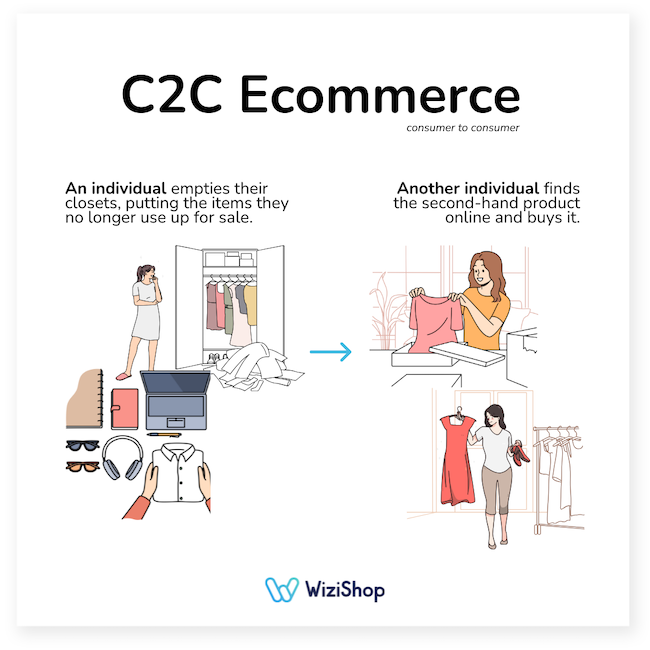
We’re talking about a horizontal or even circular economy, where everyone can take turns being a seller and a buyer, simply thanks to a platform that facilitates exchange.
You empty your closet, resell a piece of furniture, rent out your studio apartment...
Each time, you will interact directly with another individual, without going through a traditional company.
This type of ecommerce has become more widespread with the proliferation of marketplaces and developments in technology that bring together all the ads from individuals and have managed to overcome the main obstacles: security, logistics, and trust.
We’re no longer afraid to sell a product to a stranger: platforms are responsible for supervising and protecting all transactions.
Now, selling a sofa or buying a second-hand designer dress can be done in a few clicks, from the comfort of your own sofa.
In a way, C2C is digitizing modern bartering, while organizing it with a perfectly comfortable user experience on all screens.
If your sales volumes are too high in C2C, the tax authorities may ask you to create a professional status to continue selling and switch to B2C.
How does C2C differ from C2B?
While C2C connects private individuals, consumer-to-business (C2B) reverses the usual commercial dynamic by having individuals offer products, services, or data to companies.
The contrast may seem subtle, but it shapes how platforms operate, how relationships are built, and how value is perceived.
With C2C, individuals sell directly to other individuals, often through a dedicated marketplace. The motivation might be to make extra income, declutter, or share a passion. For example, someone might sell a second-hand bike on eBay or handmade jewelry on Etsy to a fellow consumer.
In C2B, the individual becomes the provider, and businesses are the clients or customers. A photographer offering a brand the rights to use their images, an influencer promoting a product to their audience, or a user allowing a business to purchase their survey responses are all C2B cases. The transaction is framed by the company’s needs but initiated or fulfilled by the consumer.
The scale and approach differ: where C2C relies on trust between peers and user-friendly tools for listing and payment, C2B requires clear contracts, proof of value, and often negotiation on rights or pricing.
Communication also shifts: C2C platforms highlight community, ease of use, and personal connection, whereas C2B emphasizes professionalism, measurable results, and the potential benefits for the business.
In summary, both business models empower individuals, but one focuses on peer exchange while the other flips the script, positioning the consumer as a valuable supplier to companies.
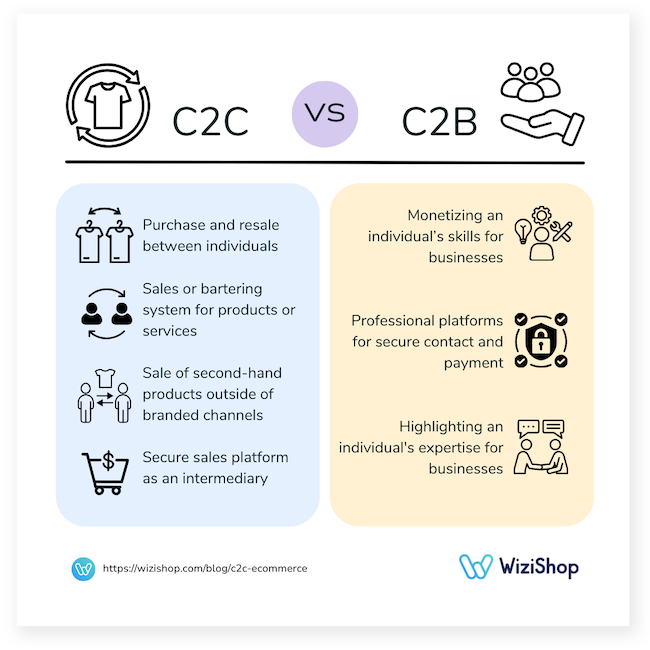
C2C ecommerce statistics
On a global scale, marketplaces are a major force: Polaris Market Research reports that the worldwide C2C ecommerce market was valued at approximately $1.67 trillion in 2023 and is predicted to reach around $11.22 trillion by 2032.
The popularity of this form of commerce can be seen on various platforms: based on data from Business of Apps, eBay had 132 million registered users in 2023, while Vinted had 105 million registered users for the same year.
One of the reasons that C2C ecommerce is experiencing growth is due to the demand for pre-loved items: 86% of consumers reported having purchased or resold a second-hand or refurbished item online within the previous year, according to eBay’s 2024 Recommerce Report.
In addition, more than 70% of responding consumers stated that they planned to spend money on recommerce/second-hand products the following year.
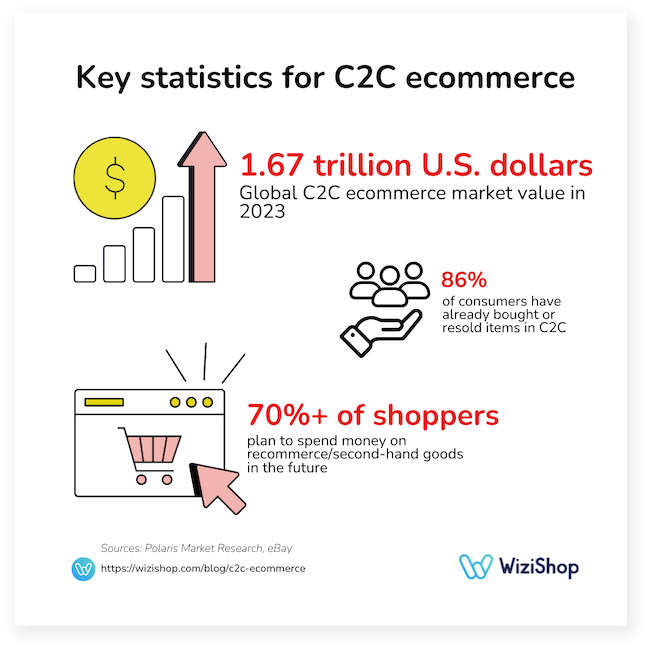
Advantages of the C2C model
The C2C model has established itself as a credible, and often more human, alternative to traditional commerce.
Driven by a more collaborative economy, it offers many advantages.
High accessibility for all
You don’t need to be a digital commerce entrepreneur or create a brand to sell online. In C2C, anyone can become a seller in just a few clicks.
Whether through Poshmark, Vinted, Craigslist, or eBay, creating a listing is simple, fast, and often free.
This model democratizes ecommerce by allowing everyone to monetize their unused goods, clothing, furniture, tech items, etc., without any technical barriers and by supplementing their income without throwing anything away.
Simple process of listing products on eBay
Attractive and competitive prices
C2C also means great deals. By buying directly from individuals, private customers don’t pay the traditional brand margins or VAT, and since the items have often already been worn/used, they’re much cheaper than in stores.
The quality of the items remains high without having to pay the costs of a physical or online store!
This explains the success of internet commerce sites such as Vestiaire Collective, where you can buy a luxury bag at half price, authenticated by experts.

Conditions for authenticating items on Vestiaire Collective
A more sustainable and circular model
This is one of the great advantages of C2C: it’s part of a responsible consumption approach.
Rather than throwing things away, we resell them, and rather than buying new, we choose second-hand goods.
The model extends the life of objects and helps reduce waste.
According to the study by the Journal of Circular Economy, the statistics speak for themselves regarding the impact of second-hand sales on the environment, compared to buying new:
- 26% to 42% lower impact for global warming,
- 27% to 42% lower impact for cumulative energy demand, and
- 35% to 53% lower impact for water scarcity footprint.
A personalized experience
Unlike a traditional ecommerce site, C2C exchanges can be negotiated, adapted, and personalized between consumers.
The seller chooses their prices and preferred shipping methods. The buyer, on the other hand, can ask questions, request a discount, or opt for in-person delivery in their city.

Examples of private messages on Airbnb
Platforms designed for trust
C2C only works if trust is at the center of the experience. And that is precisely what many platforms have carefully built: verified profiles, rating systems, secure payment, insurance in case of problems, integrated after-sales service, etc.
On Vinted, for example, in the event of a dispute over an item deemed defective, the platform takes over to resolve all issues and ensure payment or refund as quickly as possible.
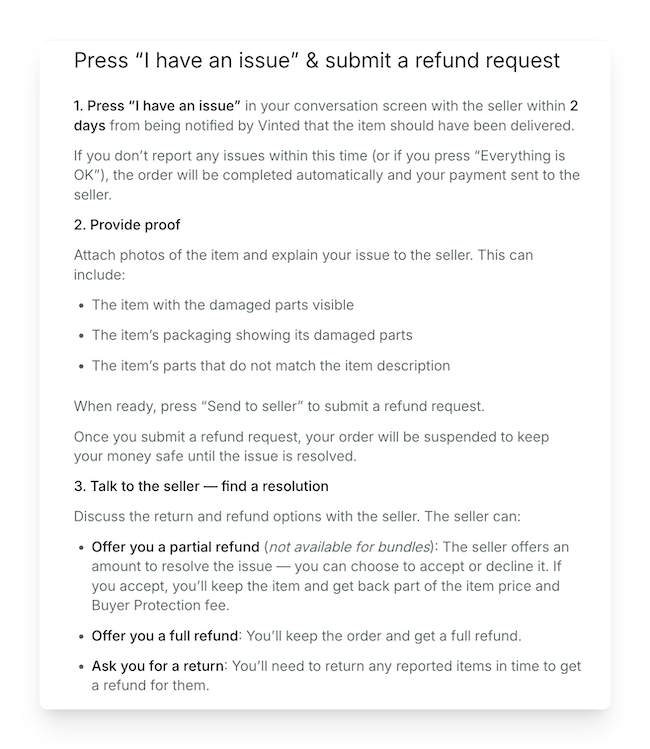
Process for submitting a refund request on Vinted
A mobile-first approach perfectly suited to consumers
C2C fits perfectly with our current lifestyles: everything can be done from your smartphone, between appointments or while traveling.
Posting an ad, chatting with a buyer, sending a package, or tracking a payment... For many platforms, everything can be managed from an app, with ultra-simple interfaces.
This is what makes sites like Vinted and Depop so successful. They’re designed for fast, intuitive, and mobile-first use: in fact, 90% of Vinted’s global audience is on mobile, according to statistics from Fevad, the French national association for ecommerce and distance selling.
Challenges of C2C ecommerce
C2C ecommerce offers accessibility and opportunity, but it also comes with unique challenges that can affect both buyers and sellers:
- Trust and safety: Transactions between strangers can carry risks such as scams, misrepresentation of products, or failure to deliver. Building trust without a central authority can be difficult.
- Payment security: Without secure payment methods, buyers and sellers may face fraud, chargebacks, or loss of funds.
- Quality assurance: Product quality can vary widely, and there’s often no formal guarantee or return policy.
- Dispute resolution: Resolving conflicts over damaged goods, late deliveries, or incomplete orders can be challenging, especially when platforms offer limited support.
- Platform limitations: Some C2C sites provide minimal seller tools, analytics, or marketing features, making it harder for sellers to stand out.
- Shipping and logistics: Individuals may lack experience with packaging, delivery timelines, or international shipping regulations.
- Market saturation: Popular platforms can be crowded, making it difficult for sellers to gain visibility and attract customers with their products or services.
While C2C ecommerce is accessible and flexible, addressing these challenges is essential for building trust and ensuring positive buying and selling experiences.
Examples of C2C ecommerce marketplaces
We use the term “marketplace” here because C2C ecommerce is deployed on platforms that centralize sales. These are not stores in the same sense as in B2B or B2C ecommerce, for example, but “directories” of listings created by individuals, without professional status, for individuals.
Vinted
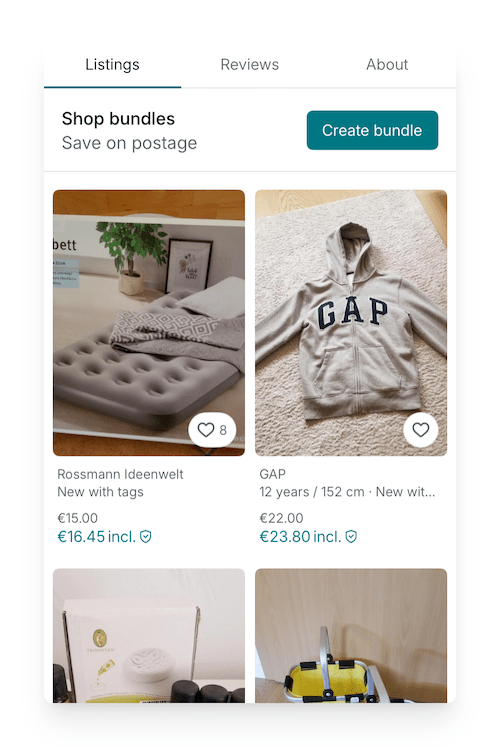
Vinted is a textbook example of successful C2C ecommerce, with a strong focus: the seamless resale of second-hand clothing and other items.
The website has successfully democratized buying and selling between individuals by leveraging an ultra-intuitive mobile experience.
Simply take a photo, set a price, and you’re done. Vinted even manages shipping labels, secure payments, and customer service, reassuring users while streamlining transactions.
According to Reuters, Vinted's revenue in 2024 was €813.4 million, up 36% from €596.3 million in 2023, with more than 65 million users worldwide, based on public statistics from the site's Wikipedia page.
Vinted’s strength lies in its growing community of sellers and buyers, the promise of finding vintage products and bargains for sale at low prices, and a committed approach to second-hand sales and responsible consumption driven by this unique ecommerce service.
Vinted doesn’t sell anything of its own, but it allows millions of users to make this horizontal business a reality with the help of a simple mechanism.
Craigslist
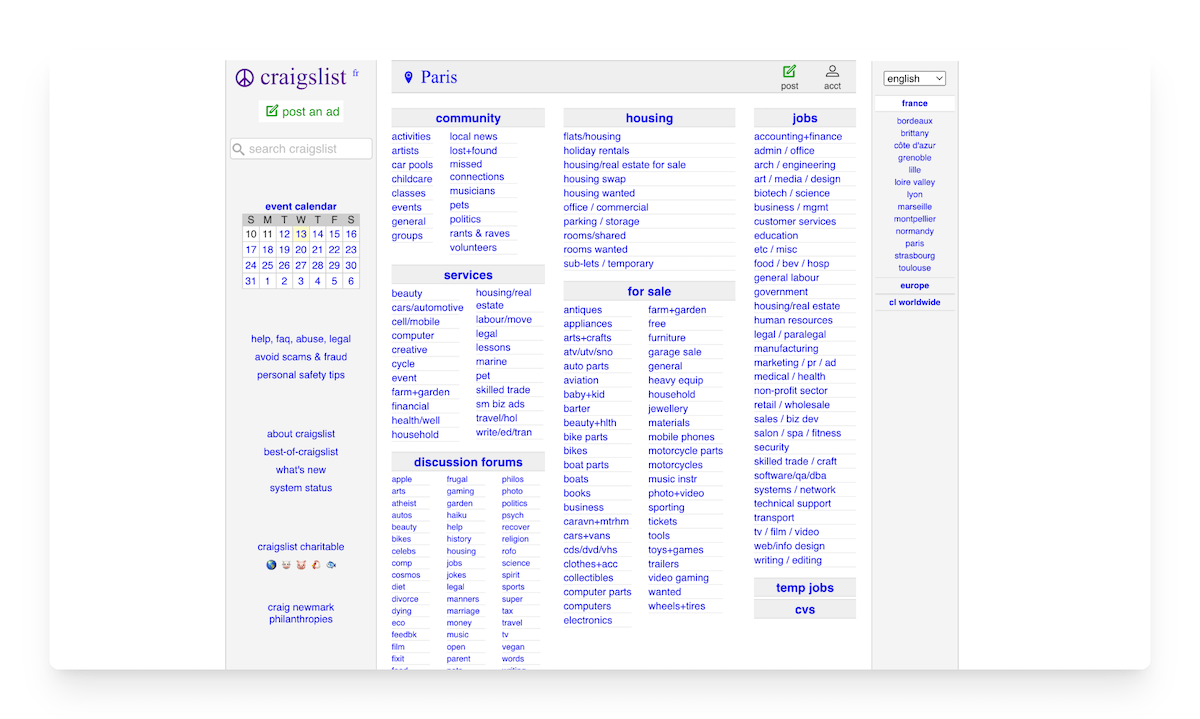
Craigslist is an online classifieds platform founded in 1995 by Craig Newmark in San Francisco as a simple email list of local events and services. It quickly expanded into a website covering categories such as housing, jobs, services, community events, and for-sale items.
Operating primarily as a C2C marketplace, the website allows individuals to post and respond to listings directly, often facilitating local, in-person transactions.
Unlike curated ecommerce sites, Craigslist is minimalist in design, with few intermediaries, making it popular for second-hand goods, casual sales, and community exchanges. Its simplicity and broad reach have kept it a staple of online local commerce.
Vestiaire Collective
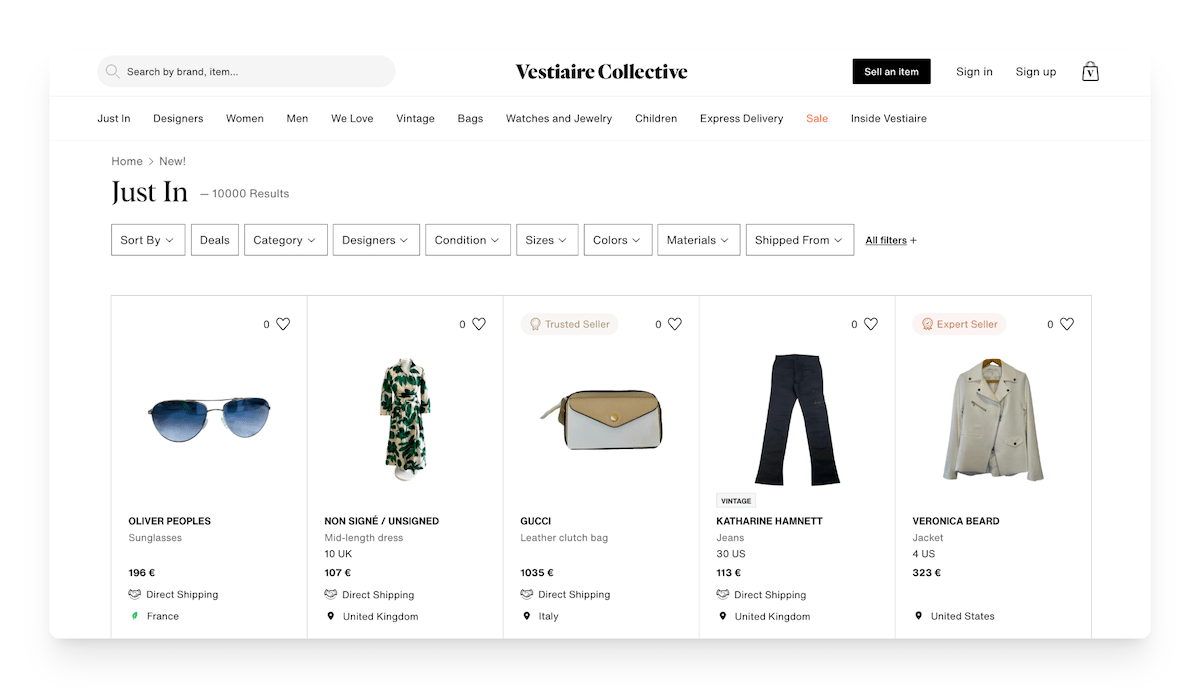
Vestiaire Collective embodies a high-end C2C business model, with a premium positioning focused on second-hand luxury fashion.
Unlike traditional C2C platforms, Vestiaire has differentiated itself by incorporating a rigorous authentication process for every product sold: each Chanel bag, each Balenciaga jacket, and each Cartier watch is inspected by experts before being shipped to the buyer.
According to statistics reported by ECDB, Vestiaire Collective recorded revenue of $475 million in 2024.
This positioning is based on two levers: trust (essential in the luxury sector) and eco-responsibility. Users are sensitive to the idea of extending the life of clothing while accessing less expensive iconic pieces, often unavailable in stores.
eBay
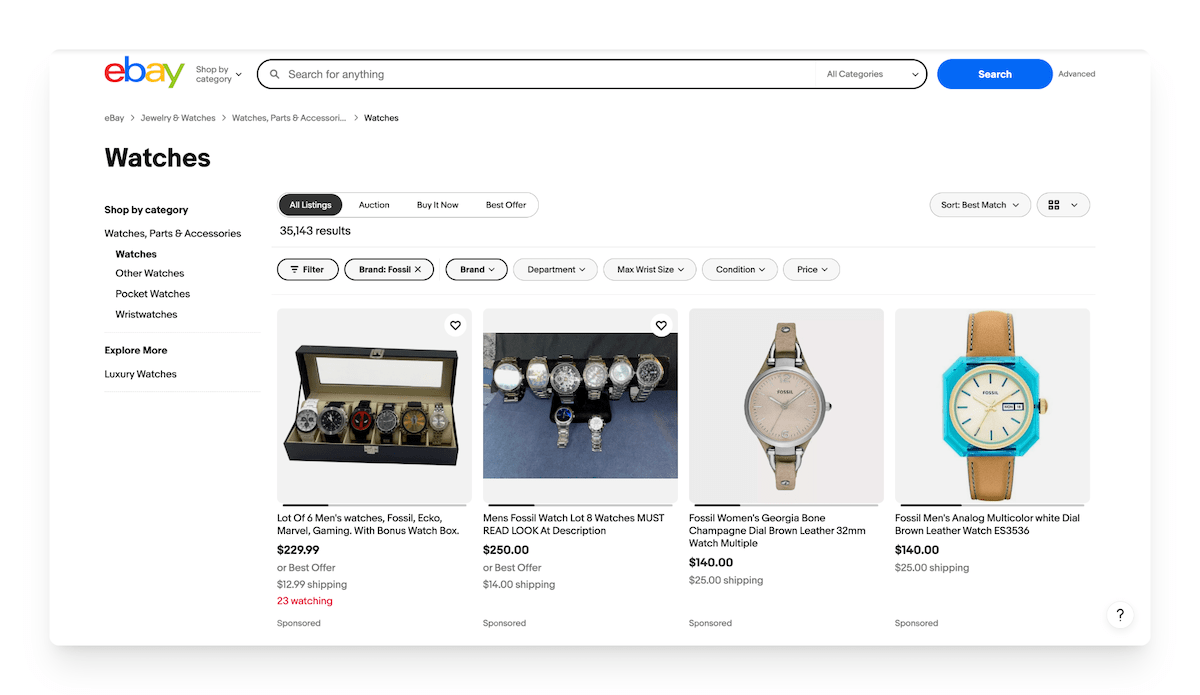
If there’s one pioneer of this business model, it’s eBay. Founded in 1995 as an auction website, eBay now allows anyone to sell their items to strangers around the world, either through auction bidding or at a fixed price.
According to data from Statista, in Q1 2025, the company recorded revenue of $2.59 billion, up $30 million from the same period in the previous year. The platform has been dominating the international second-hand market for over 30 years!
Airbnb
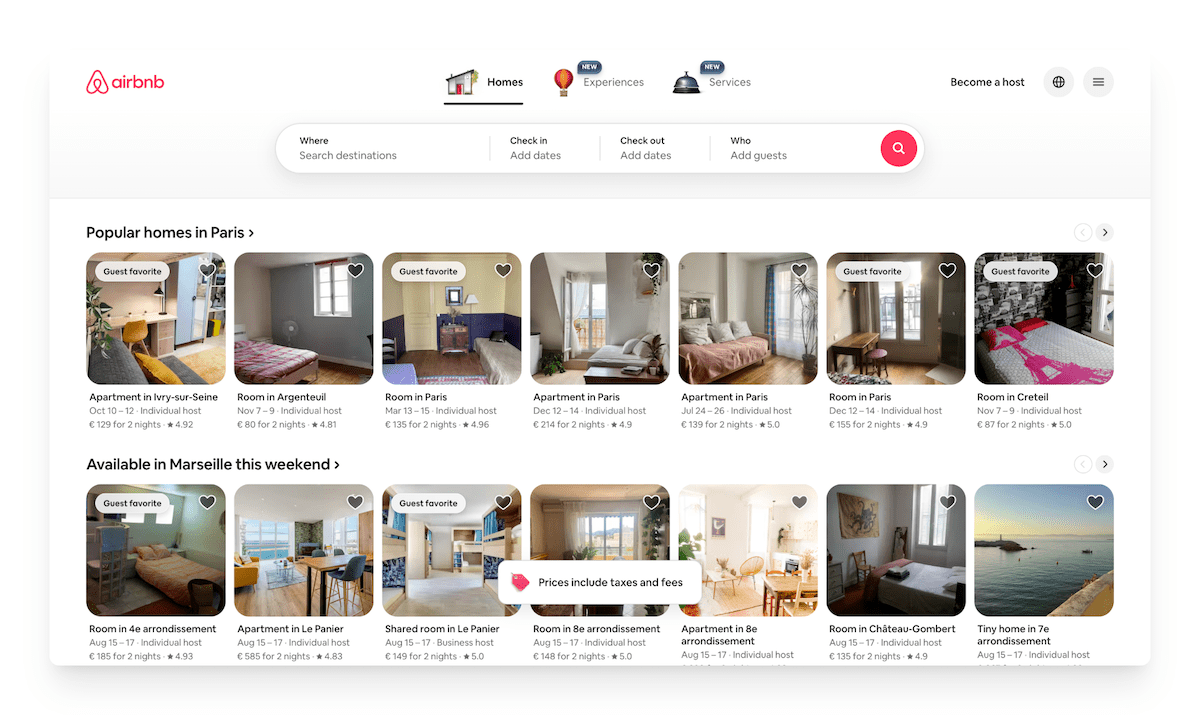
Airbnb is one of the best examples of C2C ecommerce in the tourism sector.
On this site, it’s not hoteliers or agencies who offer accommodations, but individuals who rent out their apartments, houses, or even spare rooms to other individuals for a weekend or vacation.
According to data from Statista, Airbnb generated $11.1 billion in revenue in 2024.
Etsy
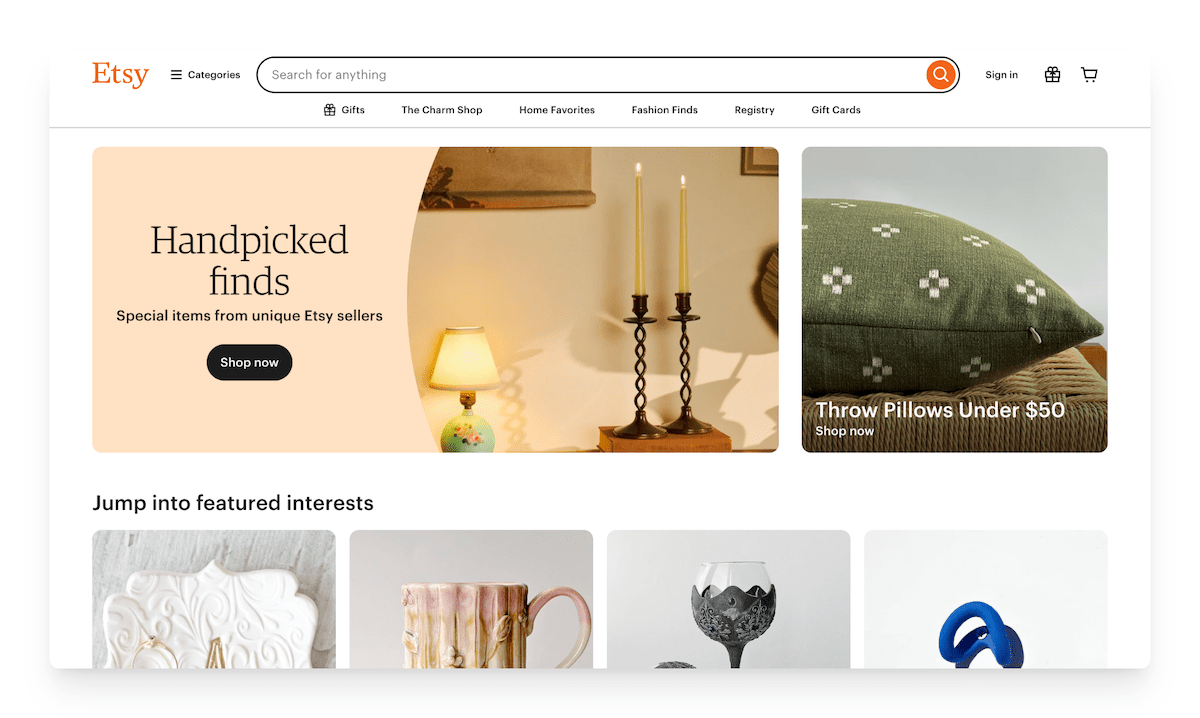
Etsy is an online marketplace launched in 2005 to connect independent creators with buyers all around the world.
Specializing in handmade goods, vintage items, and craft supplies, Etsy operates as a C2C ecommerce platform where individuals can open virtual storefronts.
Sellers offer unique products on the website, ranging from jewelry and art to home décor and clothing, often with a personal or artisanal touch.
Etsy provides tools for listing products, payment processing, and marketing, enabling small-scale entrepreneurs to reach a global audience while fostering a community centered on creativity, individuality, and craftsmanship.
Conclusion
Secure payment, rating system, insurance, calendar management... everything has been designed to facilitate exchanges between individuals in complete security with the help of various insurance policies and guarantees.
You only have to look at the phenomenal success of marketplaces to understand how much consumers want to take back control of their consumption. Buying, selling, renting, bartering... all of this is now done online, between individuals, with agility, autonomy, and often a good dose of common sense.
This model offers a more flexible, more human, and more sustainable alternative to our consumption patterns.
But what C2C reveals above all is the power of the individual. This model transforms everyone into an economic actor with the advantage of supplementing their income without ever having to sacrifice their possessions.
When choosing a C2C ecommerce platform, sellers should look for features that attract customers and support long-term growth. The best platforms will offer easy listing tools, secure payments, and strong customer support.
Consider costs such as listing fees, transaction percentages, or subscription plans, as these impact overall profit from each sale. Evaluate whether the platform’s audience matches your target market, and whether it encourages repeat customers. Some platforms also host small businesses alongside individuals, which can affect competition.
Ultimately, the right platform will balance affordability, useful tools, and scalability to help sellers maximize visibility, trust, and revenue.










